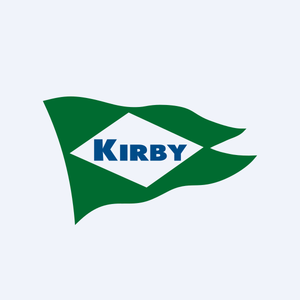
Pangaea (PANL)
We wouldn’t buy Pangaea. Its underwhelming revenue growth and failure to generate meaningful free cash flow is a concerning trend.― StockStory Analyst Team
1. News
2. Summary
Why We Think Pangaea Will Underperform
Established in 1996, Pangaea Logistics (NASDAQ:PANL) specializes in global logistics and transportation services, focusing on the shipment of dry bulk cargoes.
- Customers postponed purchases of its products and services this cycle as its revenue declined by 5.5% annually over the last two years
- Falling earnings per share over the last three years has some investors worried as stock prices ultimately follow EPS over the long term
- Ability to fund investments or reward shareholders with increased buybacks or dividends is restricted by its weak free cash flow margin of 0.2% for the last five years


Pangaea doesn’t check our boxes. We’d search for superior opportunities elsewhere.
Why There Are Better Opportunities Than Pangaea
High Quality
Investable
Underperform
Why There Are Better Opportunities Than Pangaea
Pangaea’s stock price of $4.33 implies a valuation ratio of 7.8x forward P/E. This is a cheap valuation multiple, but for good reason. You get what you pay for.
Cheap stocks can look like a great deal at first glance, but they can be value traps. They often have less earnings power, meaning there is more reliance on a re-rating to generate good returns - an unlikely scenario for low-quality companies.
3. Pangaea (PANL) Research Report: Q1 CY2025 Update
Pangaea Logistics (NASDAQ:PANL) missed Wall Street’s revenue expectations in Q1 CY2025, but sales rose 17.2% year on year to $122.8 million. Its non-GAAP loss of $0.03 per share was 74.3% above analysts’ consensus estimates.
Pangaea (PANL) Q1 CY2025 Highlights:
- Revenue: $122.8 million vs analyst estimates of $128.5 million (17.2% year-on-year growth, 4.4% miss)
- Adjusted EPS: -$0.03 vs analyst estimates of -$0.12 (74.3% beat)
- Adjusted EBITDA: $14.77 million vs analyst estimates of $9.24 million (12% margin, 59.9% beat)
- Operating Margin: 2.4%, down from 10.5% in the same quarter last year
- Free Cash Flow was -$4.76 million, down from $8.80 million in the same quarter last year
- Market Capitalization: $263.2 million
Company Overview
Established in 1996, Pangaea Logistics (NASDAQ:PANL) specializes in global logistics and transportation services, focusing on the shipment of dry bulk cargoes.
Pangaea Logistics Solutions was founded to optimize the supply chain for industries reliant on bulk commodities. Specifically, the company sought to improve the efficiency of transporting materials such as grains, minerals, and other bulk goods across global shipping routes.
Pangaea Logistics operates a fleet of vessels suited for a variety of dry bulk cargoes. The company specializes in logistics solutions that manage maritime shipping for commodities like nickel ore from Indonesia, bauxite from the Caribbean, and ice-class trades in the Arctic region. Additionally, subsidiary Nordic Bulk Carriers allows Pangaea to navigate polar and harsh environments, offering services that differentiate them within the shipping industry.
The company’s revenue is primarily derived from long-term charter agreements and spot market contracts, allowing flexibility in adapting to changing market conditions. The long-term nature of charter agreements allow for a predictable revenue stream for Pangea, providing some security. Pangaea sells its shipping services to major industrial and commodities companies, utilizing direct sales and broker networks.
4. Marine Transportation
The growth of e-commerce and global trade continues to drive demand for shipping services, presenting opportunities for marine transportation companies. While ocean freight is more fuel efficient and therefore cheaper than its air and ground counterparts, it results in slower delivery times, presenting a trade off. To improve transit speeds, the industry continues to invest in digitization to optimize fleets and routes. However, marine transportation companies are still at the whim of economic cycles. Consumer spending, for example, can greatly impact the demand for these companies’ offerings while fuel costs can influence profit margins. Geopolitical tensions can also affect access to trade routes, and if certain countries are banned from using passageways like the Panama Canal, costs can spiral out of control.
Competitors in the logistics and transportation industry include Genco Shipping & Trading (NYSE:GNK), Daseke (NASDAQ:DSKE), and Star Bulk Carriers (NASDAQ:SBLK)
5. Sales Growth
A company’s long-term performance is an indicator of its overall quality. Even a bad business can shine for one or two quarters, but a top-tier one grows for years. Over the last five years, Pangaea grew its sales at a tepid 5.3% compounded annual growth rate. This was below our standard for the industrials sector and is a poor baseline for our analysis.
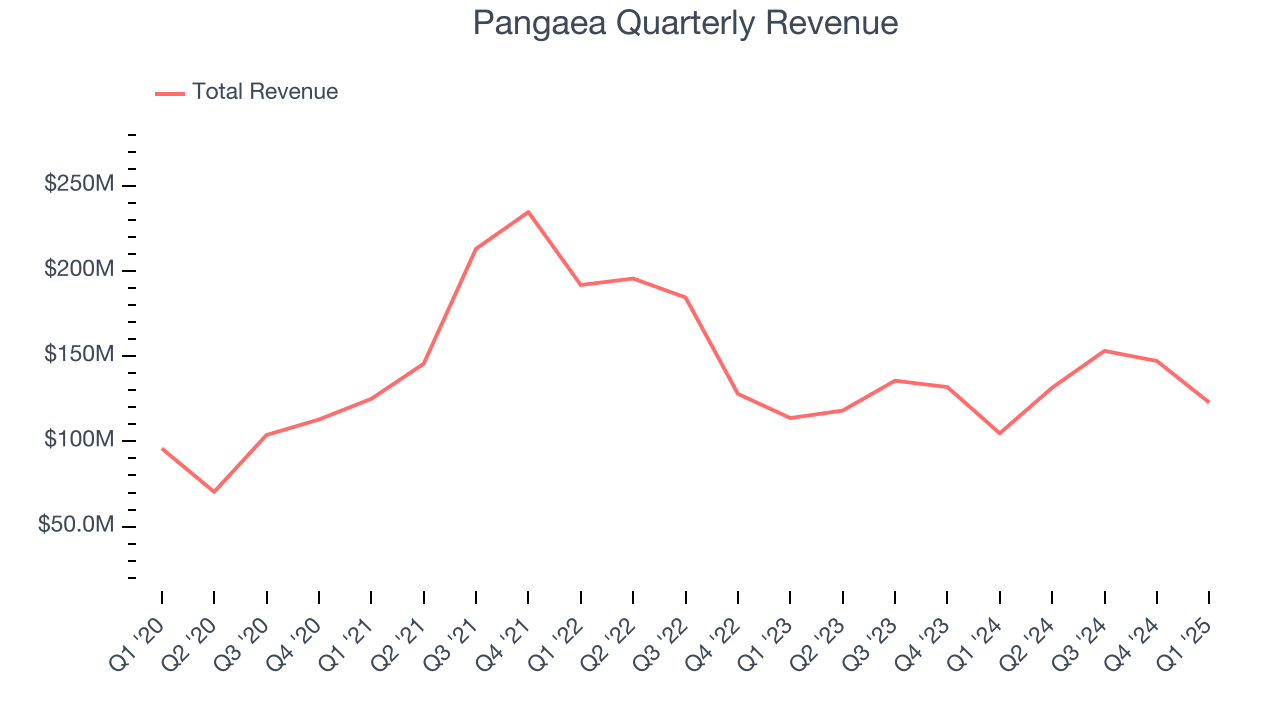
Long-term growth is the most important, but within industrials, a half-decade historical view may miss new industry trends or demand cycles. Pangaea’s performance shows it grew in the past but relinquished its gains over the last two years, as its revenue fell by 5.5% annually. Pangaea isn’t alone in its struggles as the Marine Transportation industry experienced a cyclical downturn, with many similar businesses observing lower sales at this time. 
This quarter, Pangaea’s revenue grew by 17.2% year on year to $122.8 million but fell short of Wall Street’s estimates.
Looking ahead, sell-side analysts expect revenue to grow 10.5% over the next 12 months, an improvement versus the last two years. This projection is noteworthy and indicates its newer products and services will fuel better top-line performance.
6. Gross Margin & Pricing Power
All else equal, we prefer higher gross margins because they usually indicate that a company sells more differentiated products and commands stronger pricing power.
Pangaea has bad unit economics for an industrials business, signaling it operates in a competitive market. As you can see below, it averaged a 19.3% gross margin over the last five years. Said differently, Pangaea had to pay a chunky $80.74 to its suppliers for every $100 in revenue. 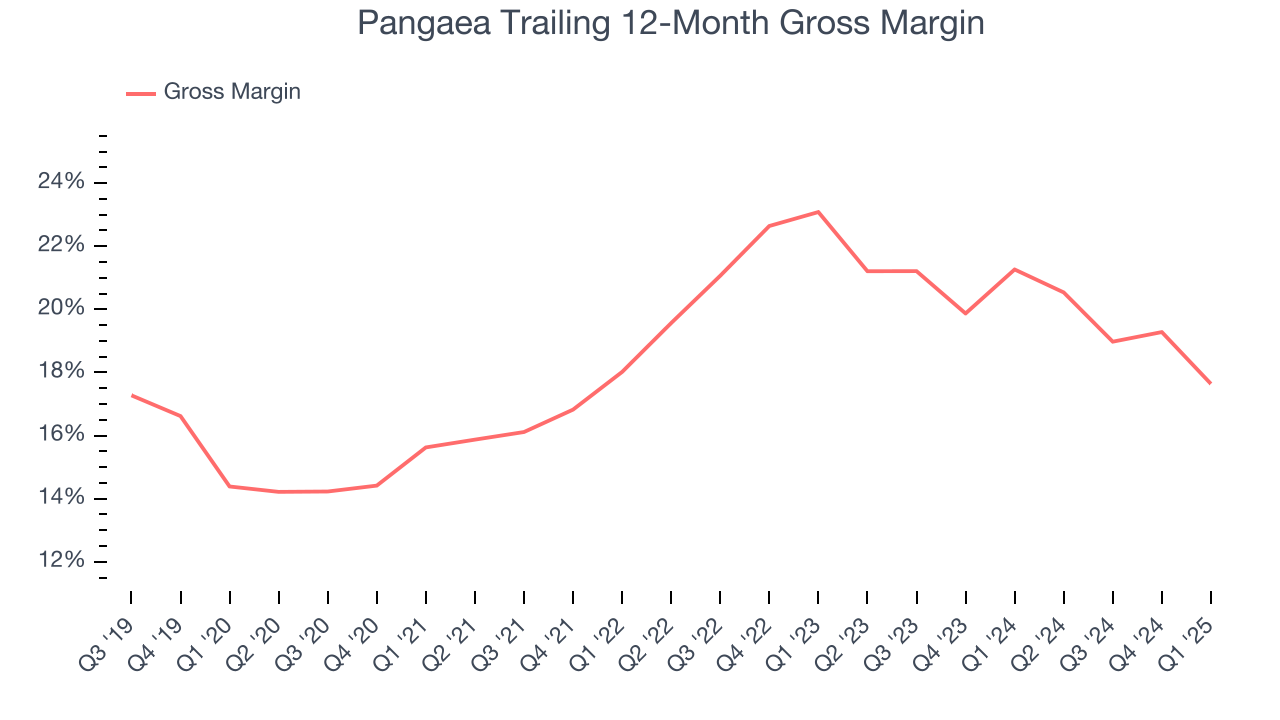
In Q1, Pangaea produced a 16.4% gross profit margin, marking a 8.2 percentage point decrease from 24.6% in the same quarter last year. Pangaea’s full-year margin has also been trending down over the past 12 months, decreasing by 3.6 percentage points. If this move continues, it could suggest a more competitive environment with some pressure to lower prices and higher input costs (such as raw materials and manufacturing expenses).
7. Operating Margin
Operating margin is a key measure of profitability. Think of it as net income - the bottom line - excluding the impact of taxes and interest on debt, which are less connected to business fundamentals.
Pangaea has managed its cost base well over the last five years. It demonstrated solid profitability for an industrials business, producing an average operating margin of 10.8%. This result was particularly impressive because of its low gross margin, which is mostly a factor of what it sells and takes huge shifts to move meaningfully. Companies have more control over their operating margins, and it’s a show of well-managed operations if they’re high when gross margins are low.
Looking at the trend in its profitability, Pangaea’s operating margin might fluctuated slightly but has generally stayed the same over the last five years. This raises questions about the company’s expense base because its revenue growth should have given it leverage on its fixed costs, resulting in better economies of scale and profitability.
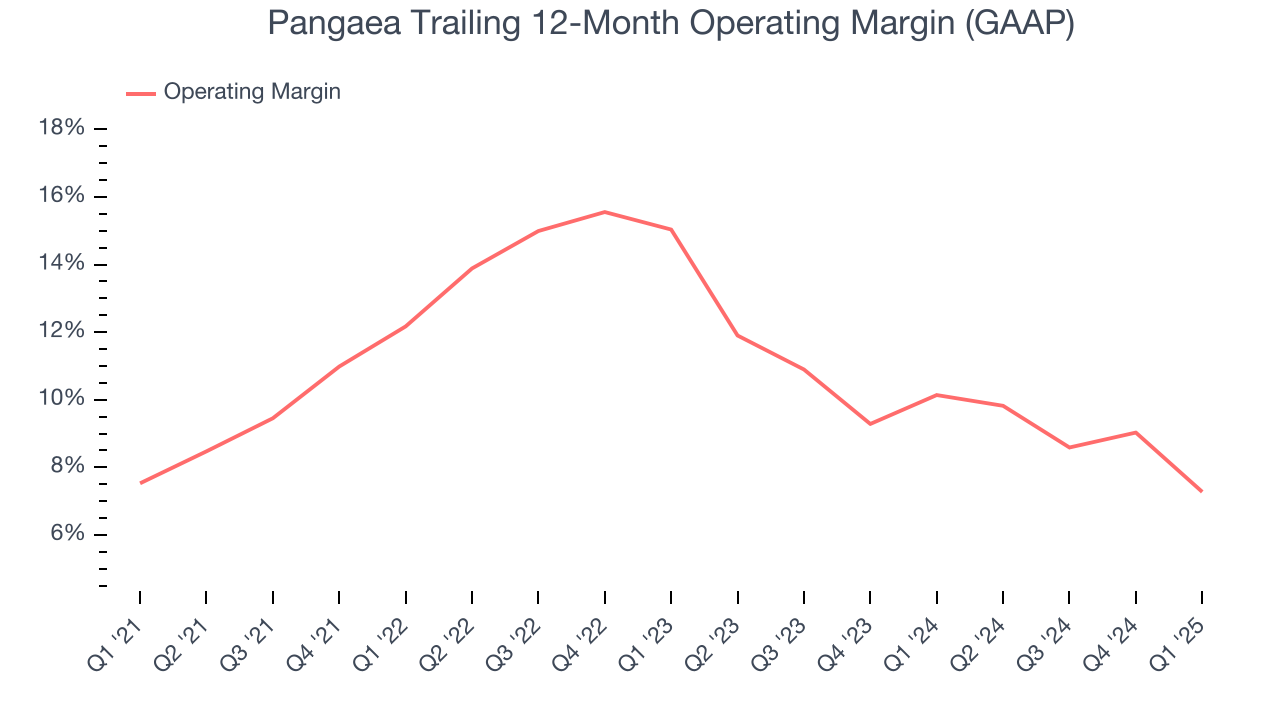
In Q1, Pangaea generated an operating profit margin of 2.4%, down 8.1 percentage points year on year. Since Pangaea’s gross margin decreased more than its operating margin, we can assume its recent inefficiencies were driven more by weaker leverage on its cost of sales rather than increased marketing, R&D, and administrative overhead expenses.
8. Earnings Per Share
Revenue trends explain a company’s historical growth, but the change in earnings per share (EPS) points to the profitability of that growth – for example, a company could inflate its sales through excessive spending on advertising and promotions.

Sadly for Pangaea, its EPS declined by more than its revenue over the last two years, dropping 44.8%. This tells us the company struggled because its fixed cost base made it difficult to adjust to shrinking demand.
Diving into the nuances of Pangaea’s earnings can give us a better understanding of its performance. Pangaea’s operating margin has declined by 4.4 percentage points over the last two yearswhile its share count has grown 41.5%. This means the company not only became less efficient with its operating expenses but also diluted its shareholders. 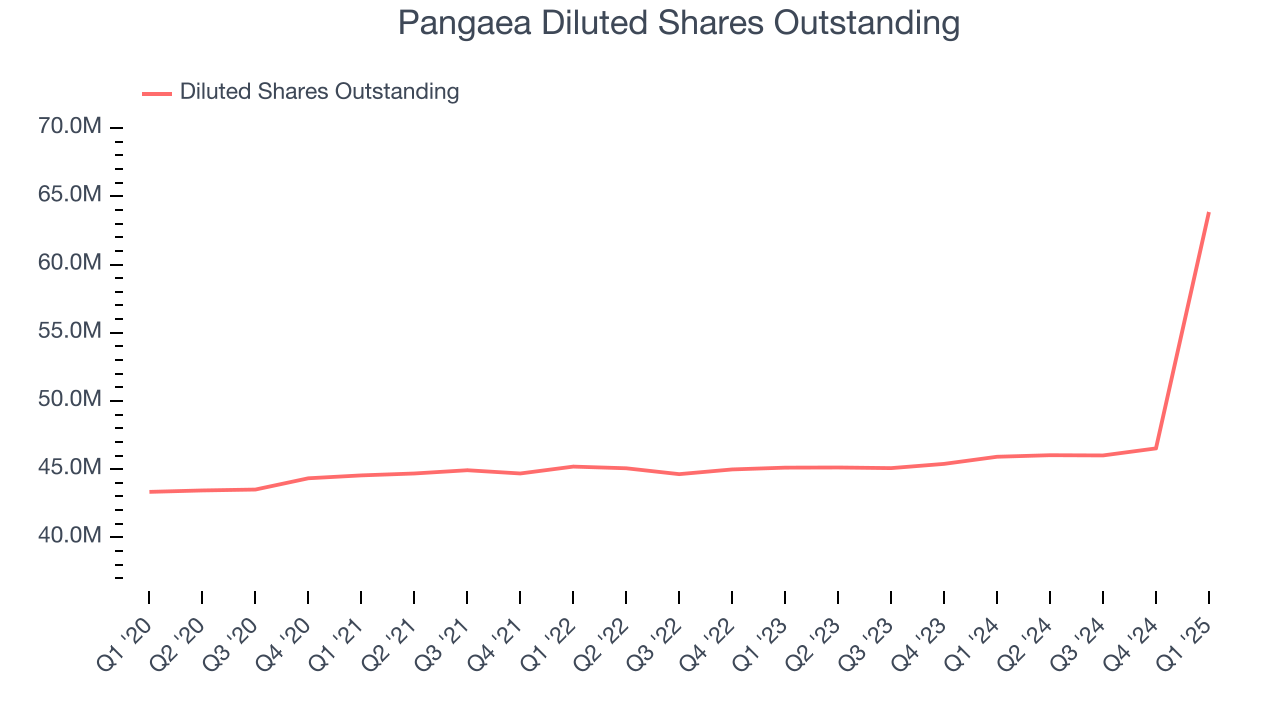
In Q1, Pangaea reported EPS at negative $0.03, down from $0.14 in the same quarter last year. Despite falling year on year, this print easily cleared analysts’ estimates. Over the next 12 months, Wall Street expects Pangaea’s full-year EPS of $0.48 to grow 12.8%.
9. Cash Is King
If you’ve followed StockStory for a while, you know we emphasize free cash flow. Why, you ask? We believe that in the end, cash is king, and you can’t use accounting profits to pay the bills.
Pangaea broke even from a free cash flow perspective over the last five years, giving the company limited opportunities to return capital to shareholders. The divergence from its good operating margin stems from its capital-intensive business model, which requires Pangaea to make large cash investments in working capital and capital expenditures.
Taking a step back, we can see that Pangaea’s margin dropped by 9.1 percentage points during that time. Almost any movement in the wrong direction is undesirable because of its already low cash conversion. If the trend continues, it could signal it’s becoming a more capital-intensive business.
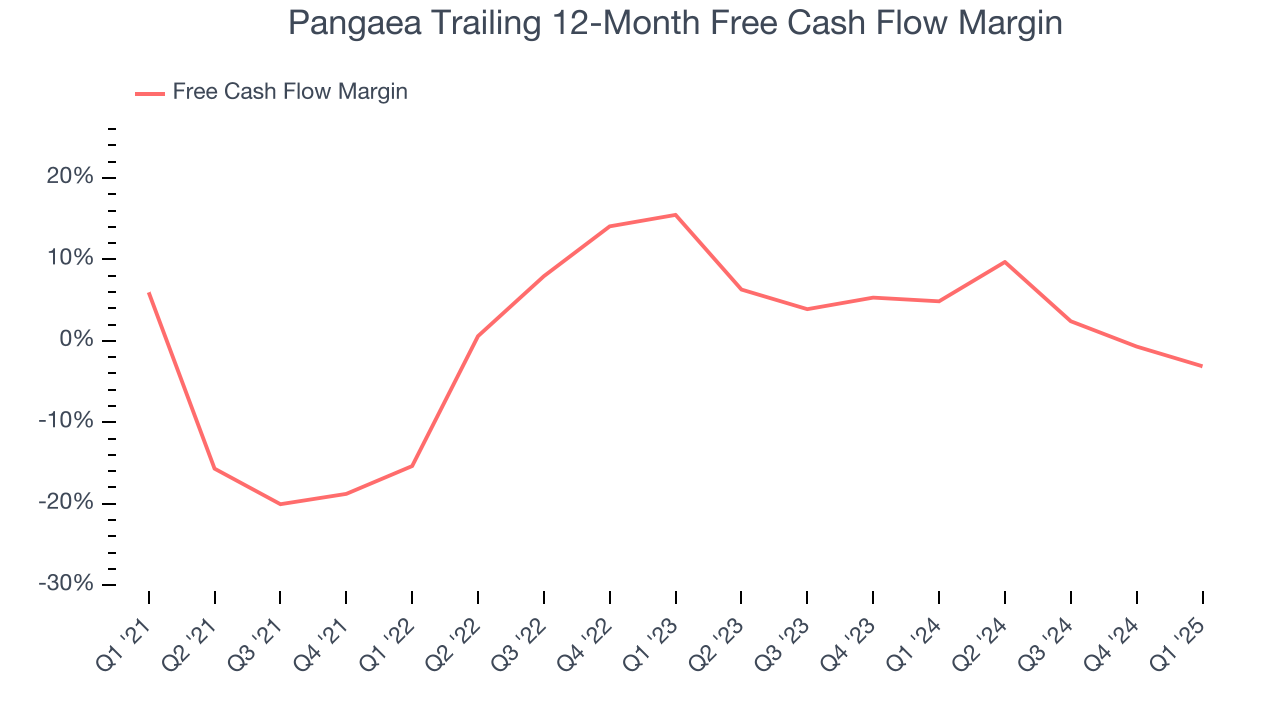
Pangaea burned through $4.76 million of cash in Q1, equivalent to a negative 3.9% margin. The company’s cash flow turned negative after being positive in the same quarter last year, suggesting its historical struggles have dragged on.
10. Balance Sheet Assessment
Pangaea reported $63.95 million of cash and $376.9 million of debt on its balance sheet in the most recent quarter. As investors in high-quality companies, we primarily focus on two things: 1) that a company’s debt level isn’t too high and 2) that its interest payments are not excessively burdening the business.
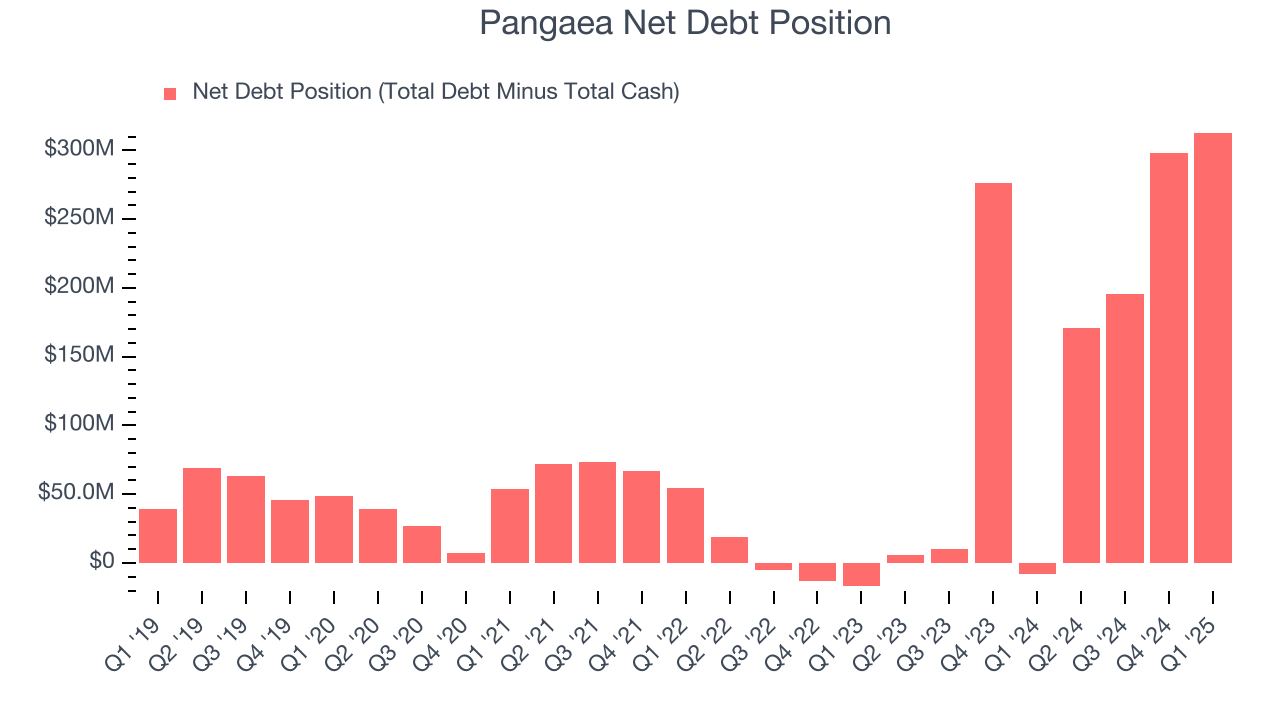
With $77.87 million of EBITDA over the last 12 months, we view Pangaea’s 4.0× net-debt-to-EBITDA ratio as safe. We also see its $4.83 million of annual interest expenses as appropriate. The company’s profits give it plenty of breathing room, allowing it to continue investing in growth initiatives.
11. Key Takeaways from Pangaea’s Q1 Results
We were impressed by how significantly Pangaea blew past analysts’ EPS and EBITDA expectations this quarter. On the other hand, its revenue missed significantly. Overall, we think this was a decent quarter with some key metrics above expectations. The market seemed to be hoping for more, and the stock traded down 3.5% to $4.27 immediately after reporting.
12. Is Now The Time To Buy Pangaea?
Updated: May 15, 2025 at 11:24 PM EDT
Before making an investment decision, investors should account for Pangaea’s business fundamentals and valuation in addition to what happened in the latest quarter.
We cheer for all companies making their customers lives easier, but in the case of Pangaea, we’ll be cheering from the sidelines. For starters, its revenue growth was uninspiring over the last five years. And while its projected EPS for the next year implies the company’s fundamentals will improve, the downside is its declining EPS over the last three years makes it a less attractive asset to the public markets. On top of that, its cash profitability fell over the last five years.
Pangaea’s P/E ratio based on the next 12 months is 7.8x. While this valuation is optically cheap, the potential downside is huge given its shaky fundamentals. There are superior stocks to buy right now.
Wall Street analysts have a consensus one-year price target of $9.38 on the company (compared to the current share price of $4.33).
Although the price target is bullish, readers should exercise caution because analysts tend to be overly optimistic. The firms they work for, often big banks, have relationships with companies that extend into fundraising, M&A advisory, and other rewarding business lines. As a result, they typically hesitate to say bad things for fear they will lose out. We at StockStory do not suffer from such conflicts of interest, so we’ll always tell it like it is.
Want to invest in a High Quality big tech company? We’d point you in the direction of Microsoft and Google, which have durable competitive moats and strong fundamentals, factors that are large determinants of long-term market outperformance.
To get the best start with StockStory, check out our most recent stock picks, and then sign up for our earnings alerts by adding companies to your watchlist. We typically have quarterly earnings results analyzed within seconds of the data being released, giving investors the chance to react before the market has fully absorbed the information. This is especially true for companies reporting pre-market.



